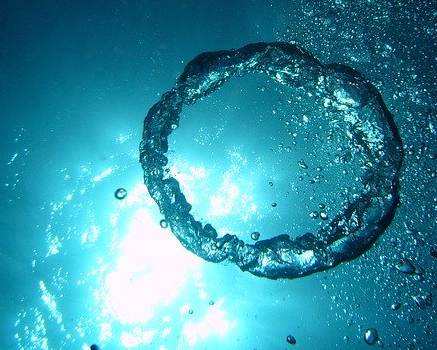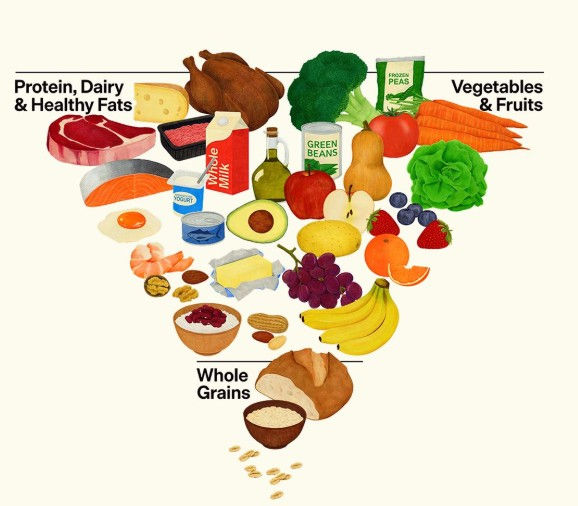For Love of Oxygen
- The Bioregulatory Medicine Institute

- Aug 28, 2020
- 7 min read
Updated: Sep 9, 2020
By Dr. Heather Tallman Ruhm

Recently I have been thinking a lot about the element we call oxygen and its incredible roles in life at large and in our bodies and our internal organisms, our magnificent microbiomes. We
are obligate aerobes - we need oxygen to survive. Most of us know this intuitively. Generally, people can survive 2-3 weeks without food, 2-3 days without water, but only 2-3 minutes without O2.
Our food and water are made of oxygen including our major nutrients. The bulk of our edible fruits and vegetables is H2O – water is one-part Oxygen two-parts Hydrogen - the O part outweighing the H parts by about 8 times. Sugars, fats, cholesterol, and proteins all contain -O’s. Roots need aeration. Wild plants and crop foods do better when their soil is loose and accessible to oxygen. Hydroponics and aeroponics need oxygen too. One critical element in the food chain of this planet is indeed oxygen. Maybe this is just a profound glimpse into the obvious, none-the-less when I contemplate the magnitude of oxygen’s magical molecules, it gives me pause. It makes me want to celebrate O’s existence and protect it too.
Oxygen enters our lungs as O2 and leaves them as CO2. O2 enters plant bodies as CO2 and
leaves them as O2 (pun intended). Plants are made of oxygen and carbon and hydrogen and a
smattering of other elements and so are we. We need plants, they need aerobes. Animals eat
plants and breathe oxygen to stay alive and the cycle is complete. Years ago, I read Sherwin
Nuland’s book How We Die. It made me reflect on our MOA (mechanism of action) of death.
Our ultimate demise, in every case, was a lack of O2. Breath is the vehicle that brings life into
our bodies, delivering oxygen to our lungs and beyond. Remove it, deny access, and we’re
done in 2-3 minutes. Partially remove access and we suffer. In medical school, we had to suck
air through a little red-striped, hollow stir stick to empathize with someone suffering from
emphysema or an asthma attack.
From the outset of this current pandemic, the front-line doctors in NY reported on ill patients with high altitude symptoms, low O2, then breathlessness. This is what we fear. Oxygen is the great elixir of life. No one can imagine life without it, for obvious reasons. The current fear instilled in the minds of men and women, scientists, and laypersons alike is the fear of suffocation. Ironically, living in fear of losing our breath, and keeping our mouths partially covered, encourages shallow breathing and poor oxygenation at a time when we most need O2. We have been given reason to pause during this global pandemic/med-panic, and we should, if for no other reason than to reflect: 1) to appreciate the role of oxygen in our bodies, 2) to find ways to access more of its life-giving properties in our lives, and 3) to support approaches that relieve our deepest fears about losing it.
What are some practical approaches? We can eat plants rich in oxygen and anti-oxidants and make it a top priority to get out in our organic gardens and nature to exchange our breath with plants. We can practice increasing the length of our exhales which encourages deeper breathing and better O2 uptake. We can embrace physical activities that lower our stress and anxiety and put our minds in a more peaceful state. We can lower our carbon footprint and pollution too, by driving less and walking more. We can work on keeping our blood and bodies clean of contaminants to feed and foster our microbiome. When we don’t protect the bacteria that serve us, we get a preponderance of those that overwhelm us. Sometimes we forget the simple stuff: we need clean water, clean air, deep breaths, good food, more probiotics, and fewer potential poisons. This is what makes us youthful – oh yes, and sleep and movement and joy and creativity and oxygen and a little less fear.
Back to oxygen. Thousands of people are placed on blood thinners to assure adequate blood flow, to assure oxygen arrives to our brains and bodies, to prevent cerebral vascular accidents and myocardial infarcts (accidental strokes and heart attacks). No one wants to die this way. One large group that knows they are somehow at risk today is the diabetic population. When a medical professional suspects this condition or monitors it, we do so by measuring hemoglobin in the form of HgBA1C. When there is excess sugar in the blood for too long, it sticks to our hemoglobin. Hgb lives for about 120 days, it has a long time to accumulates these sticky hitchhikers. And when our blood is too sticky for too long, we can’t get oxygen to the far reaches of our arteries and capillaries, and they begin to suffocate. These are the bodies mini-strokes, as it were, that lead to low oxygen and tissue damage, even death.
Dr. Tom Cowan was the first person to introduce me to the idea that our hearts are not the true
source of the movement of our blood. Most people, myself included, were raised and taught to
believe that the almighty heart pump was the end-all, be-all to ones’ sanguine course. The
heart is a profound purveyor of life in many ways and clearly contributes to the flow of our
blood, but it is not the source of its movement. The movement begins as a keenly choreographed
dance in the most minute spaces, in the lungs and their tiny air sacs, in the smallest, most
delicate and narrow arteries and veins, the places where O2, CO2, Hydrogen and other gases
and nutrients are exchanged like currency to feed our cells and remove their garbage.
The movement begins in the chemistry, through our cell’s electrical membranes and their voltage
powered gates, that rely on potassium, calcium, sodium, H+ and O- in balance. The deep caverns and crevices of our roots made up of sophisticated cell surfaces form a critical marketplace for
the exchange of life’s basic elements and the source of blood mass migration. The stuff we offer our lungs and roots, the things we give permission to course through these portals of our existence, determine our health and its flow. Smoothness or stickiness is not just about sugar. When we are in fear, or chronically stressed, we release chemicals, and genetic material, and acids that speed our hearts and shrink or isolate our cells and cause immune reactions. When we harbor anger and resentment and shame or suppress our true feelings or host the chemical fallout of trauma in our bodily tissues, we change our chemistry. We change our energy.
Chemistry is energy or at least an electrical potential after all. The positive and negative
exchanges that take place at those nano surfaces of nutrient and waste exchange drives the
movement of our blood, but it also attempts to balance our pH (the acidity and alkalinity of
each cell and its surrounding soup). Several years ago, Dr. Jerry Tennant brought my attention
to something so beautiful and elegant about our physiology that I wish I knew it sooner. Maybe
we should just ponder its magnitude. The pH (the relative acidity or alkalinity) of a liquid be it
blood or water or battery fluid is just a translation of its voltage. It’s like saying house in
Spanish, French, or Swahili. Casa, la maison, and nyumba look different, but they share their
meaning. They just need a good translator: pH 7 = 0mV, pH 0 = +400mV, pH 14 = -400mV. Our
millivolts, our energy, tells the story of our access to oxygen and friends in a different language. I am grateful for teachers like Drs. Cowan and Tennant and others who have come before.
We can be grateful for scientists, like Dr. Otto Warburg a 1931 Nobel Prize winner, who showed
us the important role oxygen plays in our health, and we can learn from innovative
practitioners who have made great advancements in the field of brain injury recovery and
orthopedic repair (dealing with chronic ligament and joint trauma and inflammation). Their
work repeatedly demonstrates the reverse effect of “how-we-die-without-O2.” They watch
tissues heal before their eyes and see dramatic improvements in their patients when they are
able to deliver oxygen to otherwise deprived tissue. In his article in the Journal of Prolotherapy
| volume 3, issue 2 | May 2011, Dr. Schallenberger did a beautiful job of explaining how
prolotherapy and prolozone injections to joints and ligaments (low oxygen areas) which have
suffered from trauma relieve even longstanding suffering and allow for repair. He is able to
disrupt what he calls The Circle of Chronic Pain (trauma ---> decreases oxygen utilization --->
decreases membrane potential and increases free radical damage ---> increases tissue damage,
edema and inflammation) with these oxygen enhancing therapies.
By improving circulation, lowering inflammation, and increasing oxygen, tissues breathe a sigh of relief. If we support our microbiomes (which create many of the substrates needed in oxygen utilization), and improve lifestyle habits that encourage healthy blood flow, then we can replace much fear with hope.
Read any book or scientific journal on the benefits of breathing to move oxygen and it will not come as a surprise that when we move oxygen into our tissues we enhance our lives. Likewise, when we eat well and sleep well and move our inner worlds with intention when we take care of the chemical messages we share with our roots, our blood, brains, and bowels benefit, as does our beautiful biome.
There are many ways to bring oxygen to our lungs and support its transport and help move it in and out of our cells. The fetus may have the upper hand when it comes to an affinity for oxygen, but we all should be so covetous. We should be careful about the things that inform our chemistry and our electricity; which electrical interferences we allow to flow through our bodies while we face a computer screen or TV or hairdryer or any other “smart device.” We can improve our affinity to oxygen when we pursue practices that raise our pH and lower our electrical exposure. We can promote alkalinity through fresh foods, leafy greens, especially those rich in minerals and anti-oxidants, and through relaxation and exercise.
This is not new science; it is fundamental, yet should not be forgotten or taken for granted. Bioregulatory medicine is wise to improve our access to oxygen, and balance energy, and un-obstruct the flow of our blood and its correlate waste removal system, the lymph. We need to get un-stuck, releasing our visible and invisible scars, nourishing our vessels and cells and bugs, allowing our bodies to take in oxygen and let go of fear. Give O a chance, even for 2-3 minutes.




